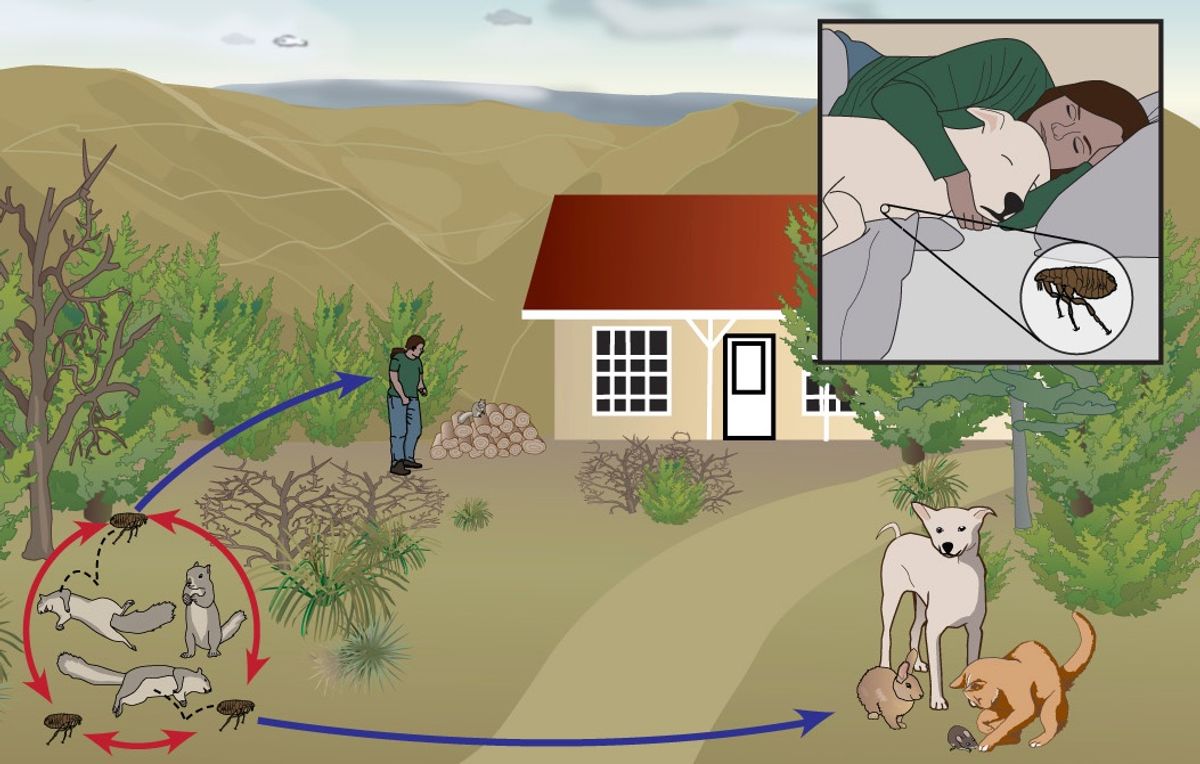On 11 August 2017, public health officials confirmed the presence of fleas infected with the plague in two Arizona counties, Navajo and Coconico.
Navajo County released a statement on their Facebook page informing residents of the discovery:
NCHD have notified the residents and the burrows, which are located on private property, which will be treated. The area will be closely monitored to determine if further action is required.
Navajo County Health Department is urging the public to take precautions to reduce their risk of exposure to this serious disease, which can be present in fleas, rodents, rabbits and predators that feed upon these animals. The disease can be transmitted to humans and other animals by the bite of an infected flea or by direct contact with an infected animal. To limit possible exposure, people are encouraged to avoid rodent burrows and keep dogs on a leash as required by Arizona State law.
An abundance of active prairie dogs doesn’t indicate disease is present. However, a sudden die-off of prairie dogs and rodents, may be an indicator of plague. Persons noticing a sudden die-off of rodents or rabbits are urged to contact the Navajo County Health Department.
Symptoms of plague in humans generally appear within two to six days following exposure and include the following: fever, chills, headache, weakness, muscle pain, and swollen lymph glands (called “buboes”) in the groin, armpits or limbs. The disease can become septicemic (spreading throughout the bloodstream) and/or pneumonic (affecting the lungs), but is curable with proper antibiotic therapy if diagnosed and treated early.
On 3 August 2017, Coconino County issued a press release regarding similar findings on fleas found on prairie dogs:
The Coconino County Public Health Services District has identified fleas containing plague.
CCPHSD is urging... https://t.co/Qya39jF7LI
— Coconino County (@CoconinoCounty) August 3, 2017
Although the disease's historical specter loomed large, its presence was neither novel nor cause for widespread alarm. The Washington Post reported that the illness has come and gone in various U.S. states since the 1920s:
Today, fatal human cases are rare, averaging just seven a year in the United States dating to the mid-1920s, when the disease swept through Los Angeles, the last significant outbreak in a major American city. Arizona, California, Colorado and New Mexico experience the highest concentration of cases, though since the 1970s, plague has appeared in Nevada, Oregon, Idaho, Wyoming and parts of western Texas.
Moreover, infectious disease expert Claire Panosian Dunavan told Health.com that even in "bad" years, very few Americans were sickened by the "very, very rare" illness:
Above all, put plague in perspective, says Dr. Dunavan. “I’m all for people becoming educated about different infectious diseases, but a report reminded me that in 2015, a ‘banner year’ for plague, we had 15 cases and 4 deaths throughout the U.S.,” she says. “That’s a significant mortality rate, but the number of total cases is also quite small. In terms of what kills people day in and day out, plague is very, very rare.”
Arizona was not the only state where public health officials confirmed the presence of plague-infected fleas in 2017. Two months earlier, the New York Times reported:
Health officials in New Mexico have more experience with plague than many might expect: Every year for the last few years, a handful of people in New Mexico have come down with plague. One person has died.
In 2015, an Oregon teenager was diagnosed with bubonic plague attributed to a flea bite acquired during a hunting trip.
